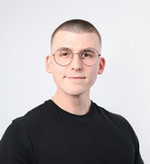Everett Charles Minchew, Ph.D., '19

Consultant on strategy team
Ambit Inc., a firm that provides patient identification and consulting services in the rare disease sector.
Born and raised in Southern New Jersey, I was quite the active boy. My mother placed great importance on exposing me to a variety of activities during my childhood such as sports, martial arts, music & theater, and the Boy Scouts. Accordingly, I developed a keen interest in many different areas of life from a young age, which facilitated my earning a black belt in Kenpo, the rank of Eagle Scout, and a goalkeeper position on the Philadelphia Union U18 team.
Following my years at Camden Catholic High School, I accepted a scholarship to Wagner College on Staten Island, NY where I served as a placekicker for the football team and a baritone for the concert choir.
Transferred to The University of Scranton
It was not long before I elected to transfer to The University of Scranton where I was set to serve as a goal keeper for the soccer team.
However, my athletic career concluded following a second ACL injury. During my rehabilitation, I learned about Scranton's undergraduate research program through Dr. Paul Cutrufello, who graciously agreed to oversee my first independent research project.
Involved in Undergraduate Research
I was fortunate to have presented our findings at the regional ASCM meeting which was the first academic conference that I have attended. My research experience at The University of Scranton culminated when I met Dr. Andrew Venezia.
Alongside igniting my passion for molecular biology through his advanced exercise physiology course, Dr. Venezia facilitated my recruitment to the laboratory of Dr. Espen Spangenburg at East Carolina University, where I recently earned my PhD in biomedical science.
Interested in Biomedical Innovation
My Dissertation investigated a unique skeletal muscle-the flexor digitorum brevis-that is capable of maintaining physiological function without oxygen. The ultimate goal of this research is to reverse engineer the underlying mechanism(s) in order to identify novel therapeutic target(s) that can be leveraged in other skeletal muscles to promote survival during times of limited oxygen bioavailability.
I am beyond grateful to have contributed to such important work, and I look forward to devoting my scientific expertise to future biomedical innovation throughout my career.
Department of Health and Human Performance
Contact Us:
- Health and Human Performance Department
- Edward Leahy Hall 710
- 237 Jefferson Avenue
- Scranton, PA 18510
- The University of Scranton
- Phone: 570-941-5874